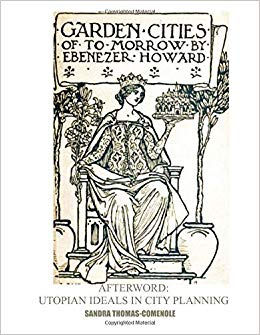The Great Visionaries: who are they?
- Zehra Wazir

- Nov 12, 2019
- 3 min read
The unfailing legacy of Visionaries in Planning history and their Utopian ideals....

It is curious to look back upon the history of today’s built environment of our world shaped by people, whom we can only read about. There is this longing to grasp the working of these great visionaries cum planners to make sense of today. Indeed, this helps new generation of planners to understand the impact of their decisions in shaping the world of future generations.
The tale begins from one of such visionaries’; Ebenezer Howard to whom we own the phenomena of suburbanization; a blessing and curse for physical form of cities today.
At the advent of industrial revolution, the cities of late 19th and early 20th century were facing the problems of clean water supply, sewage disposal, transportation, crowded housing and urbanization. I believe urbanization has been the ill of all; promoting this fantasy about great quality of city living, which led populations around world migrating from rural areas to urban centers. This fantasy did shatter eventually; as cities did not provide great quality of living except horde of people to work for industrial boom. The advent of planning profession in Canada and elsewhere began with the view to cater the social ills facing the cities. Two planning views arose during this time relating to the deterioration of living conditions which ultimately led to formation of garden suburbs. Second view was related to the deterioration of city’ aesthetic leading to city beautiful movement; promoting redesign of major streets and public spaces. To both we own the cities of today.
The Garden city concept by Howard promoted the idea of self-contained cities based on communal living. Each city housed 32,000 people with single family homes, parks and other utilities surrounded by vast areas of green belt. The city would have industries on periphery for job opportunities and a transit line (railway) to connect to other garden cities. The city had unique policy regarding economics and governance of land based on socialist ideas. A true garden city could not be achieved; however, numerous iterations in history are present. The efforts of many planners along these principles are found in creation of garden suburbs, planned frontier communities like Nanaimo, neighborhood units and greenbelt towns. The most learned aspect of these planning concepts are related to analysis of city area in terms of 500 m walking distance and placement of amenities like schools, libraries etc. in proximate to this catchment. Another major aspect was traffic planning where roads encircled the periphery of neighborhood units and the concept of gardens or parks as communal activity space rather than street itself. This latter concept was challenged by Jane Jacob in her book; life and death of great American cities. The concept of garden cities was adopted throughout the world from Germany, France and many other countries in various forms. The Planner’s role during this era was to encompass enlarged scale of cities and incorporate auto oriented development leading to expressways, shopping centers and plazas within suburbs. This led to urban sprawl as witnessed today; one of the contributing factors to environmental deterioration. In consequence to worsening of industrialized cities, various public health, housing reform, conservation and civic reform movements came into play to promote better standards of living conditions.
In Canada, planners concentrated on legislative and administrative approach using statutes from British and zoning bylaws from Americans. Local Government created by provinces in Canada are to provide needs of communities such as road, water, fire protection etc. through local government act. To keep transparency in management, municipals have their own department for day to day operations as well as quasi-judicial bodies to review their activities especially in terms of borrowing capital. Alongside, various commissions and boards like education were formed in response to good governance approach based on business management model with their own independent budget and technical staff to work on the needs of communities. In this way, a balanced approach could be maintained.
Community planning in Canada is an evolving and dynamic profession; with its root based on the welfare of people of community.






Comments